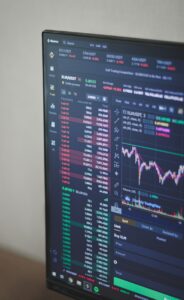Interview with a Forex EA Programmer: Behind the Scenes of Algorithmic Trading
Algorithmic trading has become increasingly popular in the Forex market over the past decade. Traders are now relying on computer programs, known as Expert Advisors (EA), to execute trades on their behalf. These EAs are designed to follow a set of predefined rules and strategies, allowing traders to automate their trading activities.
To gain insights into the world of algorithmic trading, we had the opportunity to interview a Forex EA programmer who has been developing these trading robots for several years. Here’s an inside look at the behind-the-scenes of algorithmic trading.
Q: How did you get started in Forex EA programming?
A: I have always had a passion for coding and finance. After completing my computer science degree, I started working for a financial software company. It was there that I was introduced to algorithmic trading and saw the potential it had. I decided to combine my skills in programming with my interest in the Forex market and started learning about Forex EA programming.
Q: What is the role of an EA programmer in algorithmic trading?
A: As an EA programmer, my main role is to develop trading robots that can execute trades based on predefined rules and strategies. I work closely with traders to understand their trading strategies and convert them into code. I also ensure that the EAs are efficient and can handle large amounts of data.
Q: What are the key factors to consider when developing an EA?
A: There are several factors to consider when developing an EA. Firstly, it’s important to have a thorough understanding of the trader’s strategy and goals. This allows me to accurately translate their requirements into code. Secondly, I need to ensure that the EA is robust and can handle different market conditions. The Forex market is highly volatile, and the EA should be able to adapt to changing market trends. Lastly, I focus on creating a user-friendly interface so that traders can easily customize and monitor their EA.
Q: How do you test and optimize an EA?
A: Testing and optimization are crucial steps in developing a successful EA. I use historical data to backtest the EA and evaluate its performance. This helps me identify any flaws or weaknesses in the code. I then make necessary adjustments to improve its performance. Optimization involves fine-tuning the parameters of the EA to maximize profitability and minimize risk. It’s an iterative process that requires a balance between risk and reward.
Q: What are the advantages of algorithmic trading over traditional manual trading?
A: Algorithmic trading offers several advantages over manual trading. Firstly, EAs can execute trades with incredible speed and precision, eliminating human errors and emotions. Secondly, algorithmic trading allows traders to take advantage of opportunities in multiple markets simultaneously, which would be impossible to do manually. Lastly, EAs can operate 24/7, ensuring that traders don’t miss out on potential profit opportunities even when they’re not actively monitoring the market.
Q: Are there any limitations or risks associated with algorithmic trading?
A: Like any form of trading, algorithmic trading also comes with its own set of risks. The performance of an EA is highly dependent on the quality of the strategy it’s based on. If the strategy is flawed or the market conditions change drastically, the EA may not perform as expected. It’s crucial to regularly monitor and update the EA to adapt to changing market conditions. Additionally, technical glitches or connectivity issues can also impact the performance of an EA.
Q: What advice would you give to traders considering algorithmic trading?
A: My advice would be to thoroughly research and understand the strategy you want to automate. It’s essential to have a clear set of rules and goals before developing an EA. Additionally, it’s important to regularly monitor and evaluate the performance of the EA to ensure its effectiveness. Finally, traders should always be aware of the risks involved and never rely solely on algorithmic trading for their financial success.
In conclusion, algorithmic trading has revolutionized the Forex market, allowing traders to automate their trading activities and potentially increase their profitability. Forex EA programmers play a critical role in developing these trading robots, ensuring that they are efficient, reliable, and adaptable. However, it’s important to remember that algorithmic trading is not a guaranteed path to success and requires continuous monitoring and adjustment.






